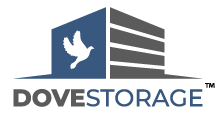
Self-storage has become a global industry, but how people use and perceive storage units varies significantly across different regions. Factors like urbanization, living space, cultural attitudes toward possessions, and economic conditions all shape how self-storage facilities operate and serve their customers.
This article will explore how self-storage culture differs in the United States, Europe, and Asia, highlighting key trends, market growth, and usage patterns in each region.
1. The United States: A Self-Storage Powerhouse
Market Overview
The U.S. is the largest self-storage market in the world, with an estimated 52,000+ facilities covering over 2 billion square feet of rentable storage space. The industry is deeply ingrained in American culture, with approximately 1 in 10 households using self-storage at some point.
Why Americans Use Self-Storage
✔ Larger Homes, More Possessions – Despite having larger homes compared to other regions, many Americans still accumulate excess belongings, leading to the need for extra storage.
✔ Frequent Life Transitions – Job relocations, military deployments, college moves, and downsizing drive demand for temporary storage solutions.
✔ Business Storage – Small businesses, e-commerce sellers, and contractors use storage units for inventory, equipment, and supplies.
Key Features of U.S. Self-Storage
✅ 24/7 Access & Drive-Up Units – Many facilities offer round-the-clock access and drive-up storage for convenience.
✅ Climate-Controlled Units – Protect sensitive items from extreme weather conditions.
✅ Vehicle & RV Storage – Large storage spaces accommodate boats, cars, and RVs.Self-storage in the U.S. is seen as a long-term solution for personal and business needs, with some tenants renting units for years.
2. Europe: A Growing But More Compact Market
Market Overview
Self-storage in Europe is growing rapidly, but the market is much smaller than in the U.S. The UK, France, Germany, Spain, and the Netherlands are leading the industry, with approximately 5,000+ facilities across the continent.
Why Europeans Use Self-Storage
✔ Smaller Living Spaces – Urban apartments are compact, leaving little room for seasonal or excess belongings.
✔ Housing Affordability Issues – High property prices mean people can’t always afford extra storage at home.
✔ Expat & Student Demand – ...
Dove Storage
March 11th, 2025










